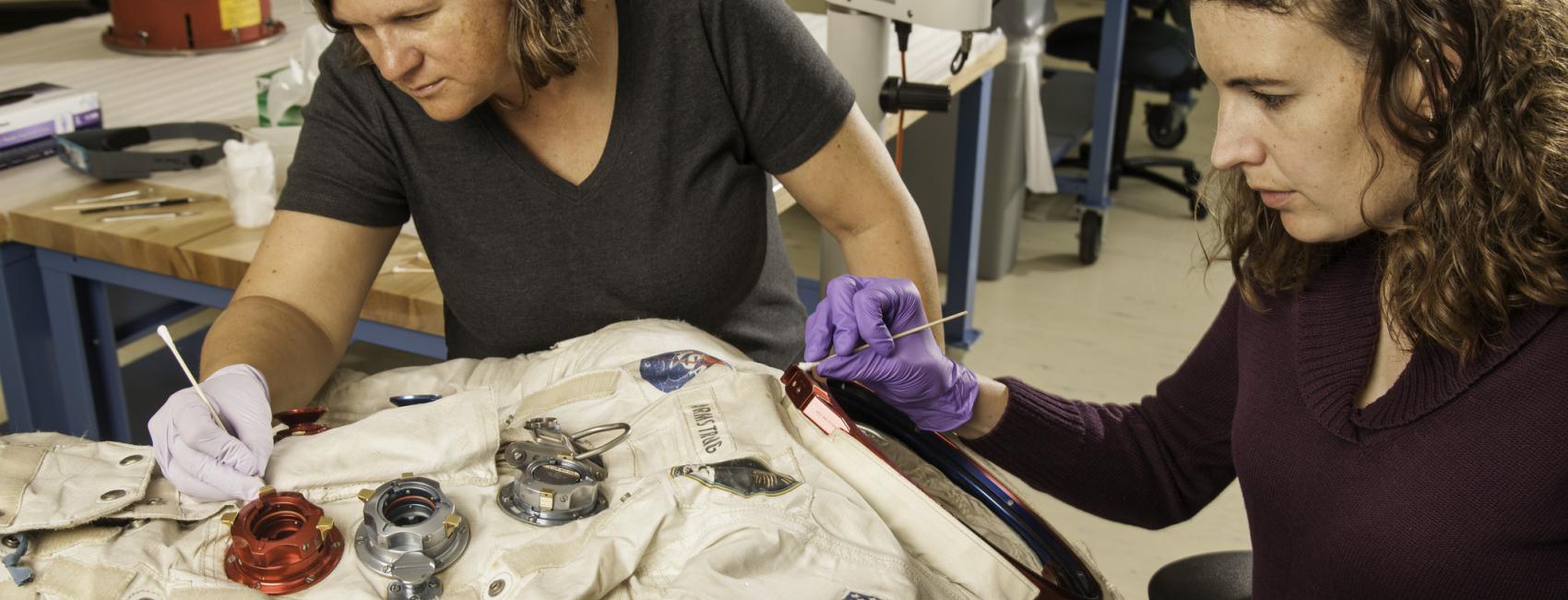Oct 10, 2015
Only a few short months after I began my job as coordinator of the Explainers Program at the Steven F. Udvar-Hazy Center, the opportunity to help create a new program was on my desk. Fresh from graduate school and settling into my work with a team of wonderful student educators, our Explainers, I jumped at the chance to be a part of something new. Smithsonian TechQuest: Eye in the Sky was the first in a series of alternate reality games that engaged visitors by challenging them to take on the role of an aerospace expert and complete a mission. Eye in the Sky took months of planning and working with a large team of educators to develop content and activities for the game. Then came months of training my corps of over 30 students about content and facilitation. After months of preparing and then launching Eye in the Sky, in the blink of an eye we were already moving on to prepare for the second game. Eye in the Sky took players miles above Earth on a mission to collect and analyze photo reconnaissance in a Cold War era rescue mission. They learned about America’s first spy satellite and the fastest aircraft at the Museum. How were we going to top that in the second version? There were a lot of things to take into consideration when the TechQuest team began forming for the second version of the game. Did we need such a large planning team? How could our Explainers be involved in its development? (They are, after all, the ones facilitating the game.) Did the format of the last game work? Were activities well received? What about content? [one_half]
[/one_half_last] The success of the first game made me want to push even further, literally and figuratively. The decision was made to take Smithsonian TechQuest out of orbit and on a mission to Mars. Smithsonian TechQuest: Astronaut Academy features more activities, both facilitated and independent. There is a dramatic departure from the story-driven, Cold War mission, the second version of the game focuses on astronaut training, allowing visitors to choose a crew position and complete tasks to become “certified” in that job—from a pilot to a medical officer, there are plenty of roles to fill. Almost two months in and Astronaut Academy is everything I hoped it would be. It’s bigger, busier, and more hands on. Players learn everything from working in astronaut gloves to calculating the nutrition of their own space “sandwich” (built, of course, with tortillas instead of bread to keep those pesky crumbs out of onboard systems). Hands-on activities far outnumber passive ones. Visitors are coming to astronaut “graduation” beaming at their accomplishments from training. [one_half]
Everything I hoped it would be, however, is a little overwhelming. With bigger, busier, and more hands-on activities come the challenges of maintenance and training. Instead of two activities to learn, the Explainers need to be familiar with 12. Maintaining the cipher wheel from Eye in the Sky is suddenly small potatoes compared to robot batteries dying, simulators crashing, and rocket launchers buckling under the pressure. (And that was just the first weekend.) Soon we will start thinking about where to go next. My head is already swimming with ideas for the third iteration of Smithsonian TechQuest, which is slated to debut in the summer of 2016. It may sound daunting to try and top Astronaut Academy, which is already on track to be a resounding success, but two very different versions of the game have taught me a lot about what successful programs can look like. But I’m getting a bit ahead of myself. Until it’s time to put the lid on Astronaut Academy, I’ll keep rebooting simulators, replacing batteries, and soaking up the enormous smiles on the faces of our new astronauts. Hopefully I’ll see YOU on your next visit to the Udvar-Hazy Center, choosing your astronaut job and mastering the skills you’ll need for a mission to Mars. Shannon Marriott is the Explainers Program coordinator at the Steven F. Udvar-Hazy Center See a write-up on Smithsonian TechQuest: Astronaut Academy in the Washington Post.

We rely on the generous support of donors, sponsors, members, and other benefactors to share the history and impact of aviation and spaceflight, educate the public, and inspire future generations. With your help, we can continue to preserve and safeguard the world’s most comprehensive collection of artifacts representing the great achievements of flight and space exploration.
We rely on the generous support of donors, sponsors, members, and other benefactors to share the history and impact of aviation and spaceflight, educate the public, and inspire future generations. With your help, we can continue to preserve and safeguard the world’s most comprehensive collection of artifacts representing the great achievements of flight and space exploration.